Abstract
Highly sensitive case definitions were first introduced by national poliomyelitis eradication programmes to avoid missing true cases of the disease, though false-positive diagnostic errors could still occur owing to low specificity. Extensive data from all 1620 cases of acute, flaccid paralysis reported in Brazil during 1987-88 provided an opportunity to study the characteristics of confirmed poliomyelitis cases and epidemiologically to evaluate potential case definitions that maximized both sensitivity and specificity. Cases that had been confirmed by wild poliomyelitis virus isolation were compared with those that had been rejected (non-polio cases). To guarantee the consistency of clinical, epidemiological and laboratory investigations, only cases less than 10 years of age that had been investigated within 15 days of the onset and with complete laboratory specimens were included. No single practical case definition combining both high sensitivity and high specificity emerged from the study. However, the results showed that poliomyelitis endemic countries with limited resources should give priority to the investigation of cases in less than 5-year-olds, cases with prodromal fever, cases without involvement in all four limbs, cases without progression greater than 3 days after the onset, and cases occurring in areas where poliomyelitis had recently been confirmed. In countries without laboratory resources, cases of acute, flaccid paralysis with initial involvement in one or both lower limbs and residual neurological sequelae at 60 days should be confirmed. Countries that are close to eradication may selectively reject any cases lacking laboratory confirmation, despite adequate specimen collection, if they do not have initial involvement in one or both lower limbs and residual neurological sequelae at 60 days.
Full text
PDF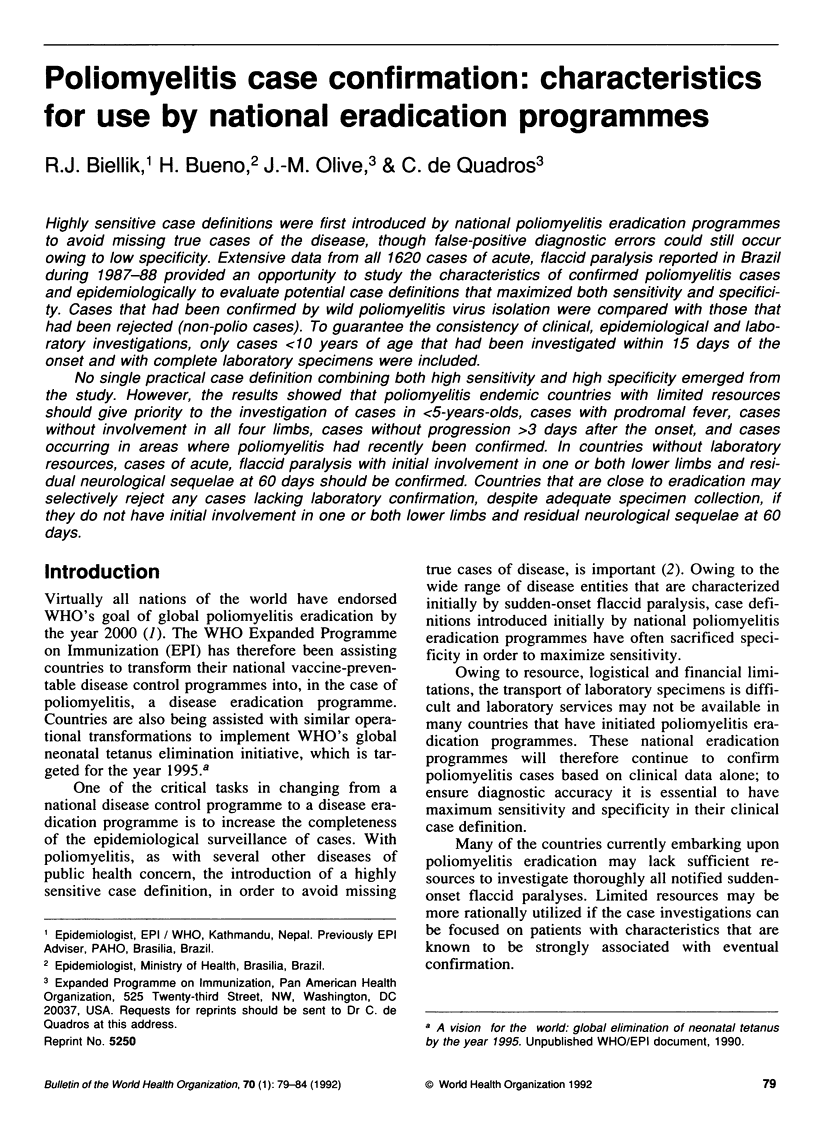
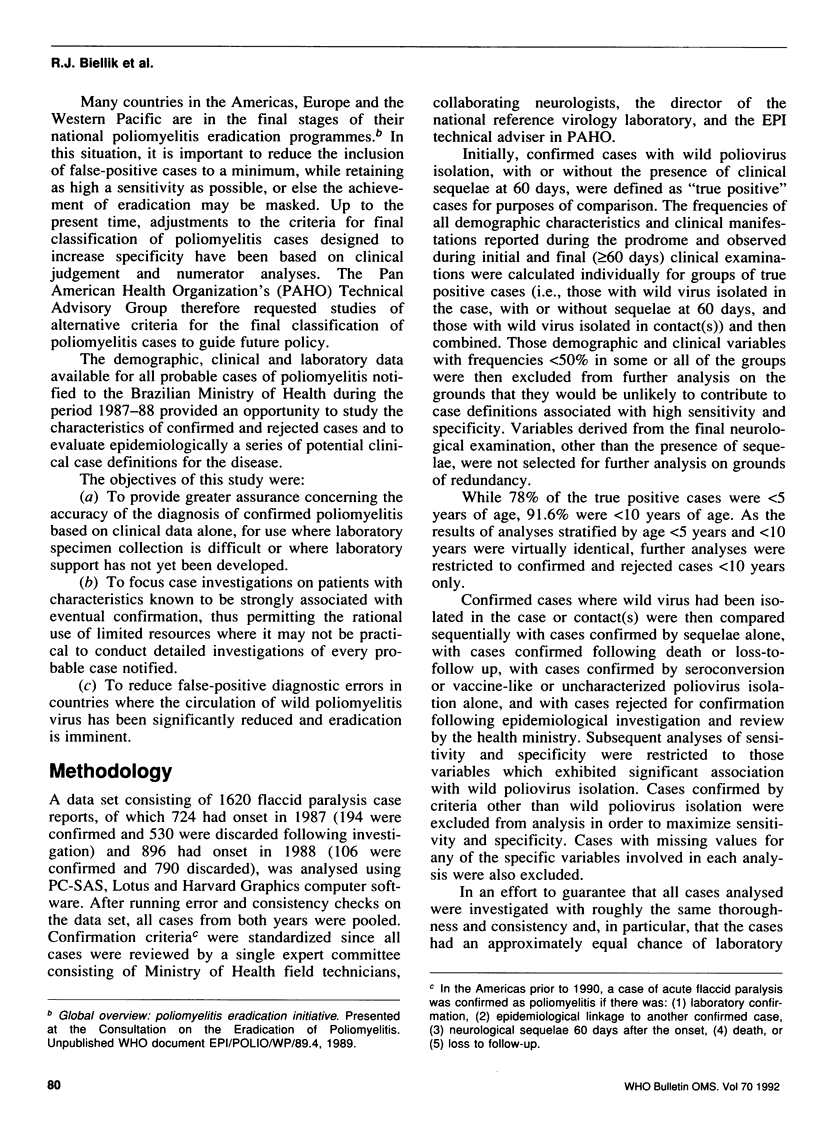

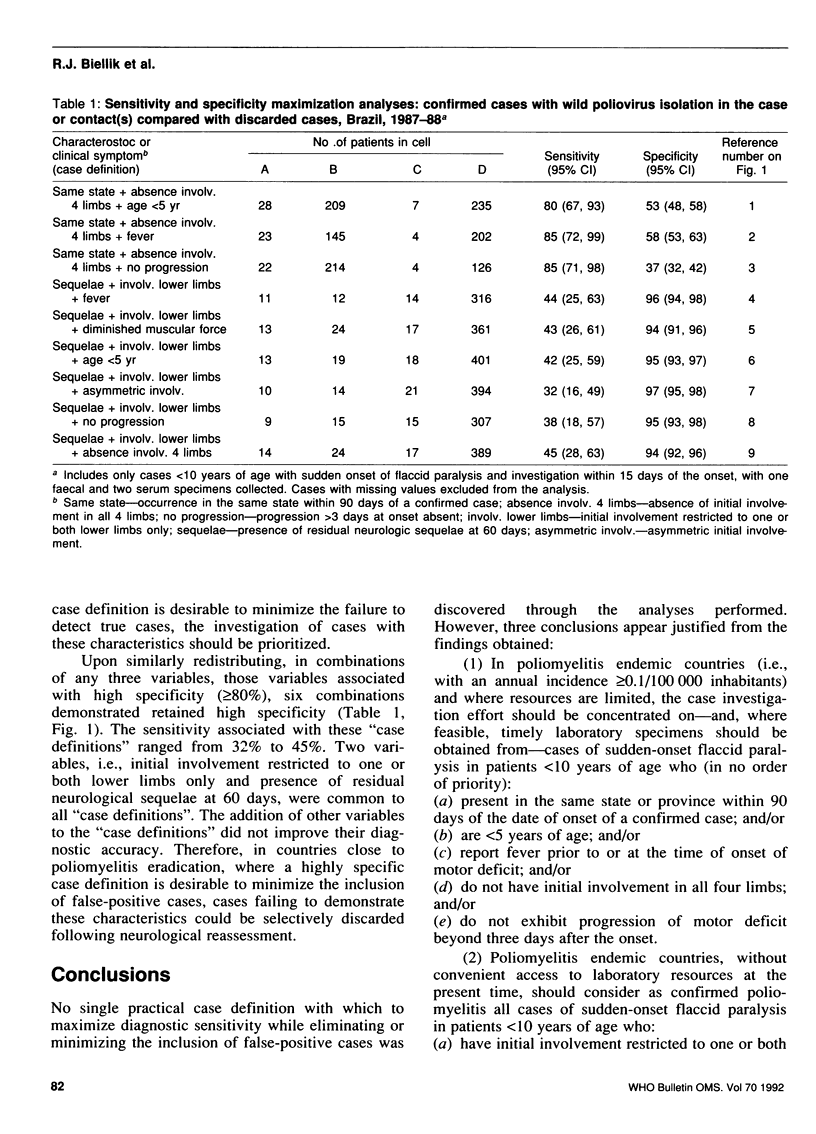
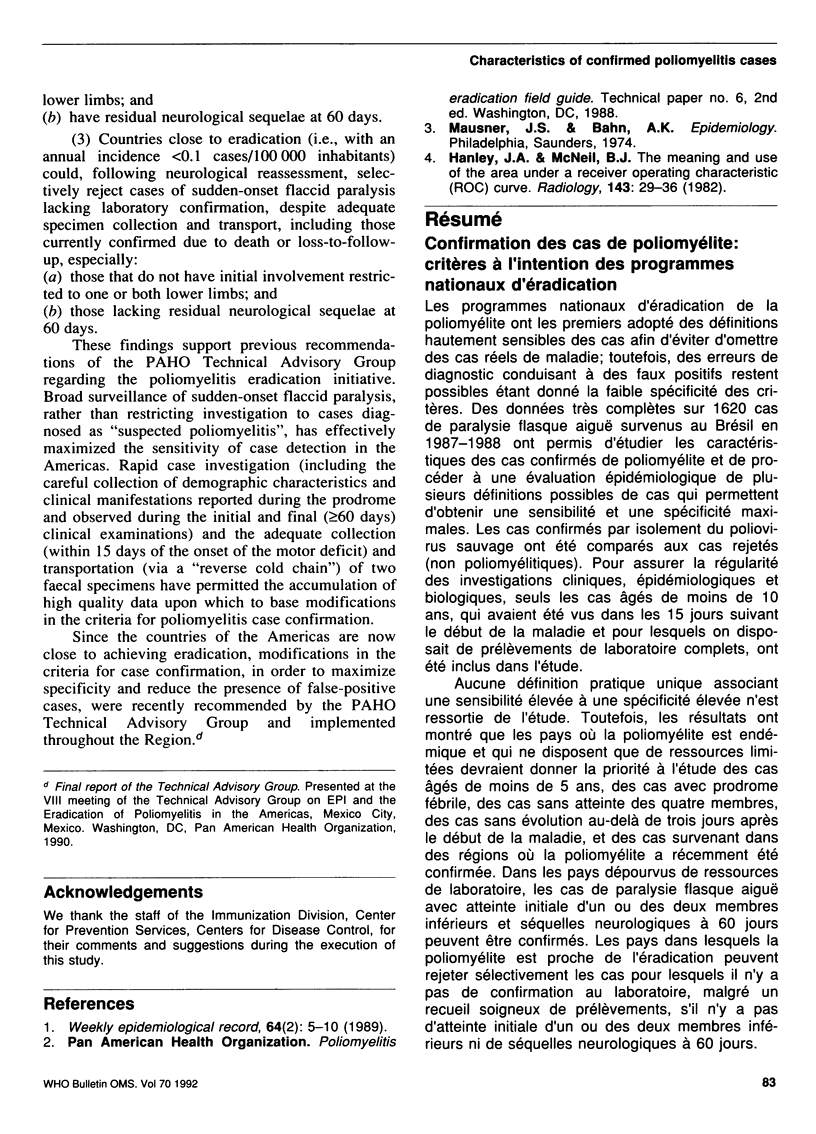
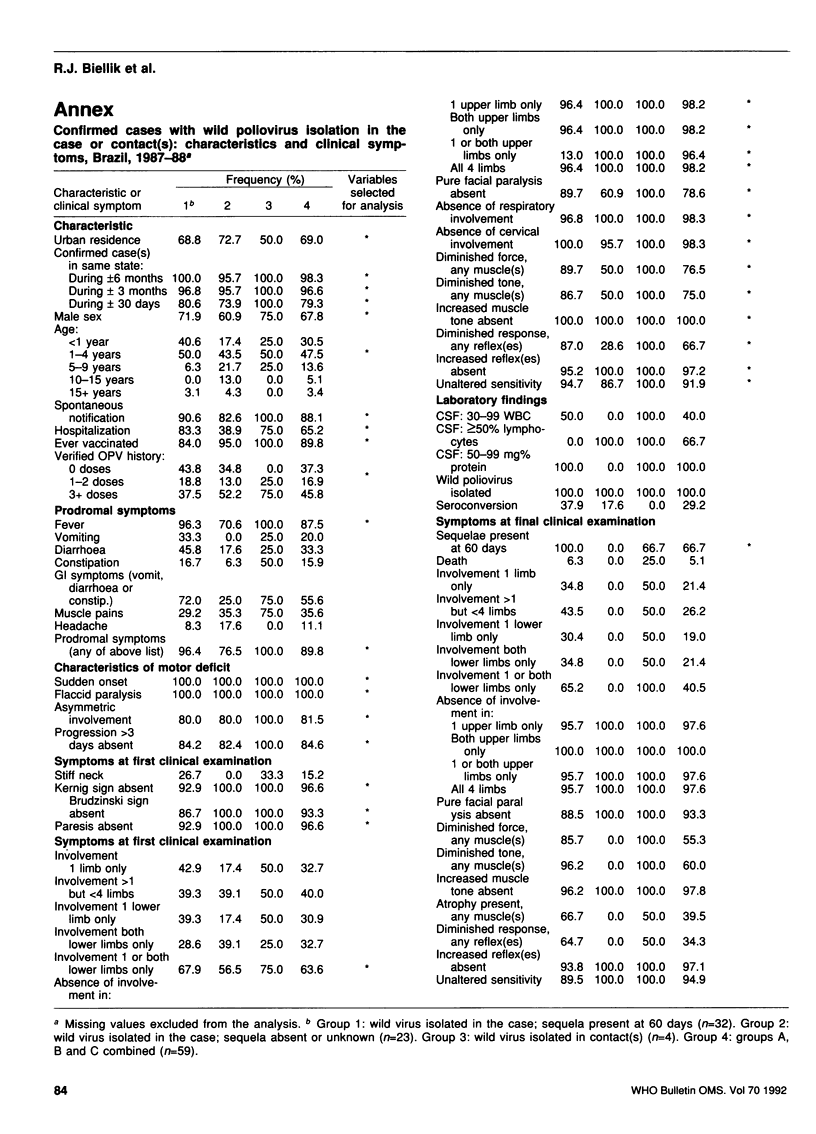
Selected References
These references are in PubMed. This may not be the complete list of references from this article.
- Hanley J. A., McNeil B. J. The meaning and use of the area under a receiver operating characteristic (ROC) curve. Radiology. 1982 Apr;143(1):29–36. doi: 10.1148/radiology.143.1.7063747. [DOI] [PubMed] [Google Scholar]


